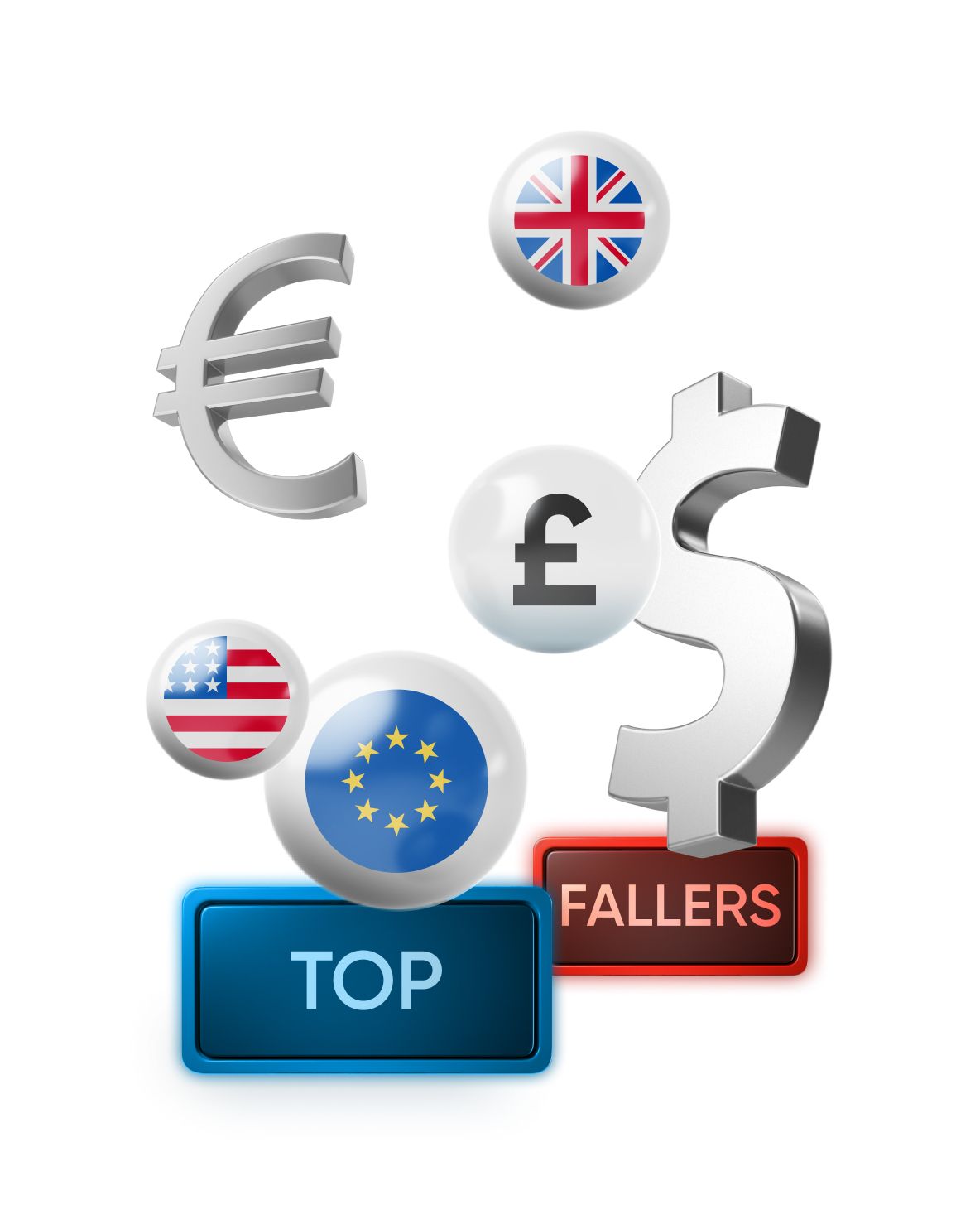Find out which currency pairs have dropped most today, and decide which pairs suit your CFD trading strategy.

Have you ever exchanged money when travelling abroad? If so, you’ve technically already traded forex!
That said, if you want to trade forex in a speculative sense – that is, with the aim of making a profit from fluctuations in the exchange rate – you have a few avenues open to you.
Firstly, you should consider that forex prices can move quickly and unpredictably, leading to unexpected losses and gains. Similarly, the financial products that traders use to take a position on forex are complicated, and require a solid understanding. Please conduct your own thorough research before risking your capital.
Retail traders will usually trade forex using derivative products like contracts for difference (CFD), exchange-traded funds (ETF), futures contracts, or options. They’ll research these products and trading providers, and open an account with the provider they feel best suits their needs.
To get an idea of how these work, take a look at our forex trading guide.
The first currency listed in a forex pair is known as the base currency. For example, in the EUR/USD pair, EUR (the euro) is the base currency.
The quote is the second currency listed in the pair. In our example, the US dollar (USD) is the quote currency.
The exchange rate reflects how much of the quote currency is needed to purchase one unit of the base currency.
So If EUR/USD is trading at 1.20, it means 1 euro is equivalent to 1.20 US dollars.
You can generally categorise forex pairs as belonging to one of three main groups: major, minor, or exotic.
Major pairs are the most-traded, highly liquid currencies involving the US dollar. EUR/USD (euro/US dollar), USD/CAD (US dollar/Canadian dollar or ‘loonie’) and GBP/USD (British pound/US dollar, often called ‘cable’) are some well-known examples.
Minor pairs, or ‘crosses’, don’t include the US dollar. That said, many of them are still widely traded, for example NOK/SEK (Norwegian krone/Swedish krona) or EUR/GBP (euro/British pound).
Exotic pairs are typically made up of a major currency, and a currency from an emerging economy – USD/SGD (US dollar/Singapore dollar), for example, or EUR/TRY (euro/Turkish lira). These can be less liquid and more volatile than major pairs and crosses, so you’ll usually only find them in the portfolios of more seasoned traders.
When you use Capital.com to trade forex, you’ll get access to more than 120 major, minor and exotic currency pairs to trade. You’ll be able to analyse forex price movements on our fast, clear charts, manage your risk with a suite of tools, and set price alerts to keep you informed of forex movements.
You can trade forex with us using CFDs, meaning that you’ll be trading on leverage – enabling you to take a position for a comparatively small deposit, or margin.
That said, leverage leads to the potential of large, fast losses and well as profits, so it’s a good idea to get to grips with our products before you decide to trade.